The NVIDIA GeForce GTX 1080 Ti Founder's Edition Review: Bigger Pascal for Better Performance
by Ryan Smith on March 9, 2017 9:00 AM ESTMeet the GeForce GTX 1080 Ti Founder’s Edition
When it comes to the design of the GeForce GTX 1080 Ti Founder’s Edition, if you’ve seen a high-end NVIDIA card in the last 4 years then you know roughly what to expect. NVIDIA has found their sweet spot in card design, and while the GTX 1080 Ti does have a few wrinkles of its own, it’s not a radical departure from the likes of the GTX 1080, GTX 980 Ti, or GTX 780 Ti. GeForce GTX 1080 Ti is a traditional NVIDIA reference card, with all the competence, performance, and functionality that entails.
At a high level, the GTX 1080 Ti Founder’s Edition is a 10.5-inch long blower-type card comprised of a cast aluminum housing and held together using a combination of rivets and screws. Designed as much for aesthetics as functionality, NVIDIA’s use of well-secured metal has done a good job of tempering noise generation, and for those who like to show off their rigs, the basic design and LED-backlit logo are unmistakable.
Cracking open the card and removing the shroud exposes the card’s fan and heatsink assembly. Once again NVIDIA is lining the entire card with an aluminum baseplate, which provides heatsinking capabilities for the VRMs and other discrete components below it, along with providing additional protection for the board. Like past NVIDIA 250W cards, the GTX 1080 FE uses NVIDIA’s vapor chamber cooler in order to maximize the heat transfer between the GPU/VRMs/DRAM and the aluminum heatsink above. As far as blower-type cards go, it’s still the card to beat.
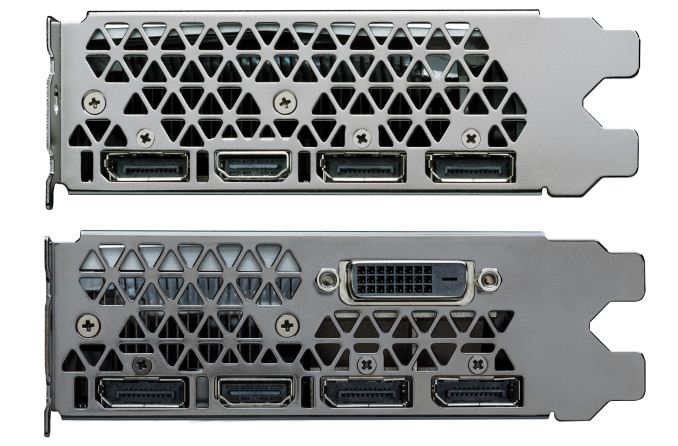
Airflow: GTX 1080 Ti vs. GTX 1080
For the GTX 1080 Ti, NVIDIA has refined this basic design just a bit in order to further increase airflow. The key change here is that NVIDIA has removed the DVI port that in past designs took up part of the second slot used for ventilation. Consequently the entire slot is now open for airflow. As we’ll see in our benchmarks the practical difference in noise is not very much, but it still means the GTX 1080 Ti is quieter than the GTX 980 Ti and GTX 780 Ti that came before it.
Otherwise in a blink-and-you’ll-miss-it kind of change, NVIDIA has also tweaked the tapering of the shroud itself to maximize the airflow. It’s difficult to pick up in pictures, but the shroud is just a bit thinner and the bottom of the shroud is just a bit higher, allowing just a bit more unobstructed airflow through the card. This subtle change is a good example of where NVIDIA is in their card design cycle: with the major performance elements of the cooler design essentially being a solved problem, NVIDIA is now toying with small changes to eke out just a bit more performance.
Popping off the cooler, we see NVIDIA’s reference PCB. This appears to be the same PCB used on the similarly configured GP102-based Titan X Pascal, and is consistent with NVIDIA’s past reuse of PCBs.
Of particular note, we can see that NVIDIA has equipped the card with a surprising number of MOSFETs, and it turns out there’s a good reason for this. For the GTX 1080 Ti, NVIDIA has opted to go with two dualFETs for each of the GPU’s 7 power phases, as opposed to the traditional 1-per-phase design used in most NVIDIA cards. While this drives up the total cost of the card a bit, the payoff is that it improves on the card’s power delivery efficiency a bit, especially at the 200W+ range the GTX 1080 Ti operates in.
This isn’t the first overall GeForce card we’ve seen with a large number of MOSFETs – NVIDIA’s board partners at times treat it as a contest in and of itself – but this is the first time we’ve seen NVIDIA use such a large number and promote it. Generally speaking additional phases and MOSFETs can improve a power delivery subsystem by spreading out the load – and in a game of inches, every bit counts – but the additional MOSFETs are subject to diminishing returns both at idle and load.
Otherwise this is a fairly typical NVIDIA PCB. The reuse of the Titan PCB means that the board should work with water blocks and other add-ons designed for the Titan, though I suspect for best overclocking results the hardcore overclockers will continue to want to look to more specialized designs from the likes of MSI, EVGA, Asus, and others.
Flipping the card over to the back, we find NVIDIA’s now-standard segmented backplate. The presence of the backplate helps to protect the card, but one or both segments can be removed to add precious millimeters of room for airflow in tightly packed SLI designs.
Moving on, towards the top of the card we find the requisite SLI and power connectors. Like NVIDIA’s 250W cards before it, the GTX 1080 Ti features a 6 pin + 8 pin setup. NVIDIA’s 250W limit means that, on-board circuitry aside, the power delivery system isn’t anywhere close to its 300W limit. Otherwise we find a pair of SLI connectors, which like the rest of the GTX 10-series cards are designed for use with NVIDIA’s latest-generation High Bandwidth (HB) bridges.
Finally, getting back to NVIDIA’s display I/O configuration, as we mentioned earlier NVIDIA has removed the DVI port from the card in favor of giving the card unobstructed airflow for better cooling. As a result, the card features only modern ports: 3x DisplayPort 1.4 and 1x HDMI 2.0b. With that said, as a consolation item of sorts for the remaining DVI users, NVIDIA is including a DisplayPort-to-SL-DVI adapter with the Founder’s Edition card. This doesn’t perfectly replace the missing DVI port – in particular, it can’t drive 2560x1440 or 2560x1600 displays – but for lower resolution displays it will do the trick. But if it’s not already clear from this change and the number of motherboards to drop DVI over the years, DVI’s days are numbered, and we’re only going to continue to see DVI ports go away at this point.


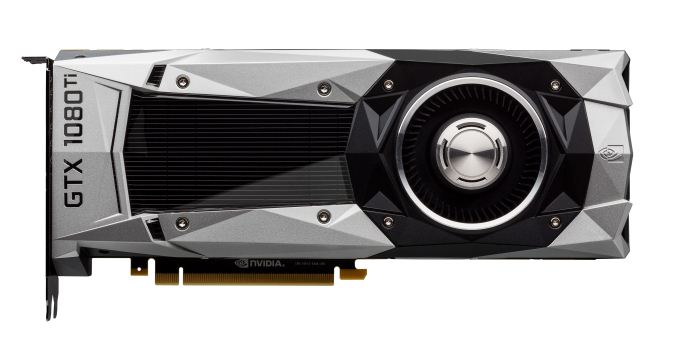
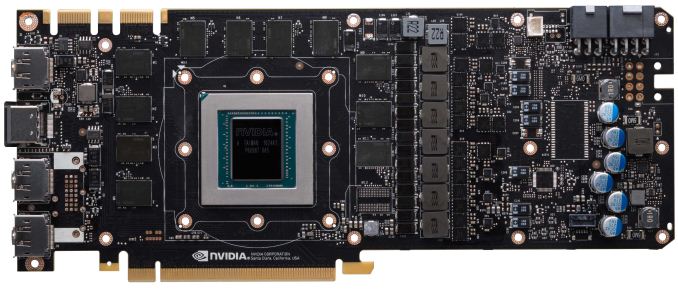
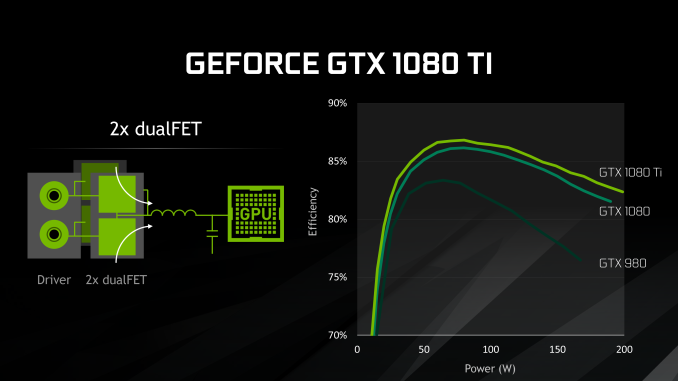
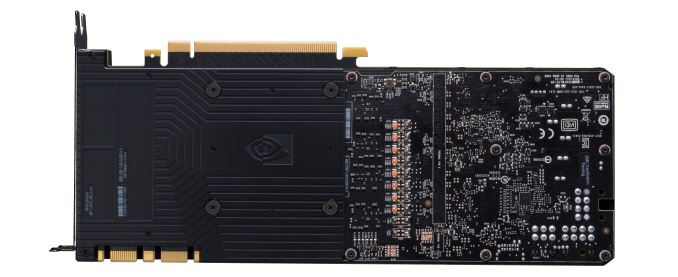
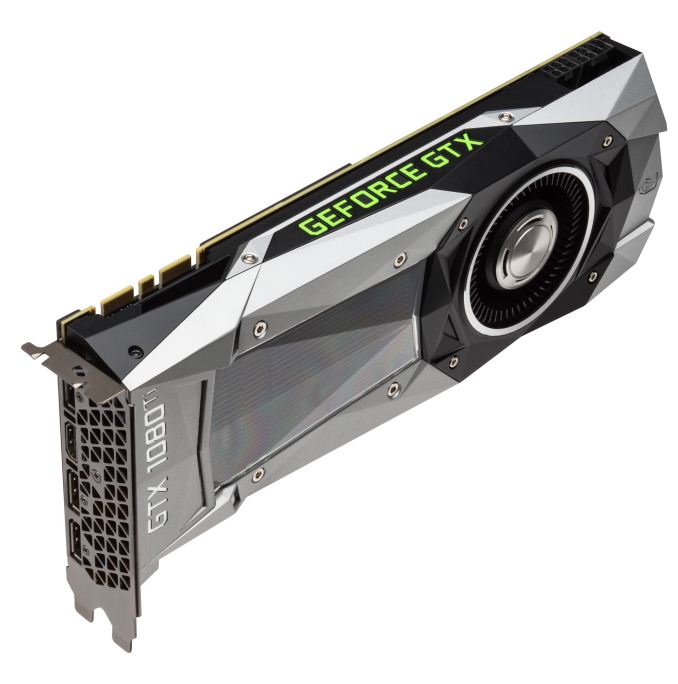








161 Comments
View All Comments
theuglyman0war - Sunday, March 12, 2017 - link
Geez developers can't catch a break...I been a registered developer with ATI/AMD and NVIDIA both for years...
Besides the research and papers and tools they invest to further the interest of game development. I have never had to do anything but reap the rewards and say thank you. Maybe there are secret meetings and koolaid I am missing?
Not sure what the actual correct scenario is tell you the truth?
Either triple AAA dev is hamstringing everyone's PC experience because development is all Console centric ( Which means tweaking FOR an "AMD owned architecture landscape" for two solid console cycles where "this console cycle alone sees both BOBCAT and PUMA being supported"! )
Or the Industry is in Nvidia's back pocket because of what? the overwhelming PhysX support? There is an option to turn on Hair in a game? Their driver support is an evil conspiracy?
Whatever... If there is some koolaid I wanna know where that line is? Gimme! I want me some green Koolaid!
theuglyman0war - Sunday, March 12, 2017 - link
Turns out your right! There is a monopoly in game development Software optimization supporting only one hardware platform! Alert the press!http://developer.amd.com/wordpress/media/2012/10/S...
HomeworldFound - Thursday, March 9, 2017 - link
Underhanded deals are part of the industry. Have you ever wondered about the prices even when price fixing is disallowed and supposedly abolished?These deals are always happening, look at the public terms of the deal NVIDIA and Intel.
Nvidia gets:
1.5 Billion Dollars, Over six Years.
6 Year Extension of C2D/AGTL+ Bus License
Access To Unspecified Intel Microprocessor Patents. Denver?
NVIDIA Doesn't Get:
DMI/QPI Bus License; Nehalem/Sandy Bridge Chipsets
x86 License, Including Rights To Make an x86 Emulator
For a company that was supposed to be headed into x86 wouldn't you say that's anti-competitive?
eddman - Friday, March 10, 2017 - link
Prices, I don't know. Isn't it a combination of market demand, (lack of) competition and shortages.What does that deal has to do with this? Not giving certain licenses, publicly, is not the same as actively preventing devs from optimizing for the competition in shadows.
theuglyman0war - Sunday, March 12, 2017 - link
Well there was/is a lot of litigation it seems like admittedly!close - Friday, March 10, 2017 - link
It would not be illegal, it's called "having the market by its bawles". Have you ever actually talked to someone who does this or do you like assuming it's illegal and conspiracy theory (@eddman)?You're thinking about GameWorks and GW is offered to developers under NDA with the agreement prohibiting them from changing the GW libraries in any way or "optimizing" for AMD. And by the time AMD gets their hands on the proper optimizations to put in their drivers it's pretty much too late. Also GW targets all the weaknesses of AMD GPUs like excessive use of tessellation.
But since everywhere you throw a game at you're going to find an Nvidia user (75% market share), game developers realize it's good for business and don't make too much noise.
Nothing is illegal, it's certainly not a conspiracy theory, it may very well be immoral but it's business. And it happens every day, all around you.
eddman - Friday, March 10, 2017 - link
I'm not talking about GPU-bound GW effects that can be disabled in game, and I do know that they are closed-source and cannot be optimized for AMD.I'm talking about whole game codes. Nvidia cannot legally prevent a developer from optimizing the non-GW code of a game (which is the main part) for AMD.
Besides, a lot of GW effects are CPU-only, so it doesn't matter what brand you use in such cases.
ddriver - Friday, March 10, 2017 - link
It cannot legally prevent devs from optimizing for amd, but it can legally cut their generous support.There isn't that much difference between:
"If you optimize for AMD we will stop giving you money" and
"If you optimize for AMD we will stop paying people to help you".
It is practically a combination of bribe and extortion. Both very much illegal.
And that's at studio level, at individual level nvidia can make it pretty much impossible to have a job at a good game studio.
Intel didn't exactly bribe anyone directly either, they just offered discounts. But they were found guilty.
Although if you ask me, intel being found guilty on all continents didn't really serve the purpose of punishing them for their crimes. It was more of a way to allow them to cheaply legalize their monopoly.
An actually punitive action would be fining them the full amount of money they made on their illegal practices, and cutting the company down to its pre-monopoly size. Instead the fines were pretty much modest, even laughably low, a tiny fraction of the money they made on their illegal business practices, and they got to keep the monopoly they build on them as well.
So yeah, some people made some money, the damage done by intel was not undone by any means, and their monopoly built through illegal practices has been washed clean and legal. Now that monopolist is as pure as the driven snow. And it took less than a quarter's worth of average net profit to wipe clean years of abuse.
ddriver - Friday, March 10, 2017 - link
amd was not in the position to make discounts, intel was, so they abused that on exclussive terms for monetary gainsamd is not in the position to sponsor software developers, nvidia is, so they abuse that on exclussive terms for monetary gains
I don't really see a difference between the two. No one was exactly forced to take intel's exclussive discounts either, much like with nvidia's exclusive support and visits to strip clubs and such.
So, by citing intel as precedent, I'd say what nvidia does is VERY MUCH ILLEGAL.
eddman - Friday, March 10, 2017 - link
Then why nothing has happened all these years, for something that seems to be open knowledge among game publishers, developers and GPU manufacturers?A dev asking nvidia for help optimizing a game is not illegal. It is a service. AMD is free to do the same.
What about those games where AMD helped the devs to optimize for their hardware? Was that illegal too? It's either illegal for both or none.
If they've been doing it openly for years and even put their logos in games' loading screens, then it's safe to say it's not illegal at all.